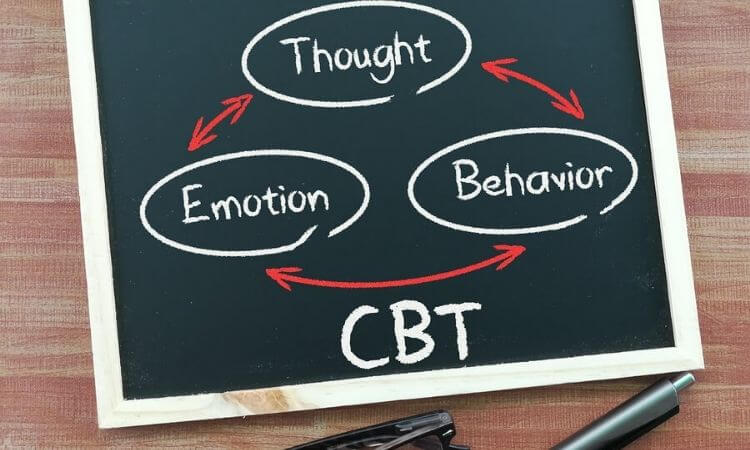
(EMDR) Movement Desensitization and Reprocessing Therapy is a practice in which a therapist asks the patient to think about specific aspects of one or more traumatic experiences that cause the person to experience distress. During this, the client follows the motions of the therapist’s hands with their eyes. The therapist moves his or her fingers in the client’s visual field, and he or she visually follows this movement.
These eye movements are rapid and jerky and redirect a person’s sight by fixing their vision on a moving target. Advocates for EMDR believe that promoting these movements while thinking about past traumatic experiences can help a patient to reprocess the experience and mitigate the emotional response. EMDR also includes other principles from behavioral therapies.
EMDR Therapy
EMDR was initially intended to assist in the treatment of PTSD, acute stress disorder, and adjustment disorders. Proponents of EMDR also claim that it is beneficial for the treatment of other psychiatric disorders such as anxiety, depression, and maladjustment, as well as for the treatment of addiction to drugs and alcohol.
It is important to note, however, that not every therapist who uses EMDR includes the eye movement component. Sometimes the therapist merely taps their finger or uses sound or some other method in the place of eye movement.
Elements of EMDR
In general, EMDR typically includes the following elements in its overall treatment package that have empirical validation for their usage:
Assignments and Homework
Most behavioral therapies require that patients complete certain assignments during mental health treatment and to complete homework assigned by the therapist. The concept of giving homework to develop new skills to address an emotional problem has a lengthy history in psychotherapy.
Development of a Robust Therapeutic Relationship
Therapists who practice EMDR aim to develop a strong working collaboration between the patient and the therapist as a primary contributor to a successful outcome in treatment. This alliance has long been considered to be a vital element of effective therapy.
Exposure Treatment
As noted, as a part of EDMR patients are required to reflect on certain aspects of their traumatic experience(s) that are especially stressful. This type of reflection is adopted from a therapeutic technique known as exposure therapy.
The notion behind exposure therapy is that when a person feels anxious, depressed, fearful, etc. as a result of a particular stimulus, having him or her re-experience the stimulus ultimately causes the anxiety to peak and then level off.
By repeatedly exposing a person directly or through mental imagery, he or she should experience a decrease in anxiety. Ideally, there will be a point in which reflecting on the experience no longer causes the person significant distress. During exposure, patients can also learn breathing and relaxation techniques to aid in the process.
Cognitive Restructuring

Cognitive restructuring is a practice that is adopted from cognitive-behavioral therapy (CBT), one of the most common therapeutic models employed by therapists today. Cognitive restructuring entails re-conceptualizing a person’s emotions, thoughts, and belief systems in a manner that is more functional and pragmatic.
CBT is based on the idea that many dysfunctional behaviors, such as substance abuse, are driven by an unhealthy and dysfunctional belief system. CBT identifies these irrational thoughts and feelings and, using a therapeutic process, helps the person restructure them, so they are closer to reality.
The Process of EMDR
The specific delivery of EMDR may vary between treatment providers, but the standard practice is performed using eight main steps or phases. These eight phases consist of the following:
Phase I: History and Background of the Patient and Preparation for a Treatment Plan
Most of this information is gathered during the first one or two sessions, but therapists will often continue to garner information about the patient’s history and background throughout the therapy process. During this phase, the client and therapist will determine specific targets to be addressed in therapy. These typically include traumatic events and other significant emotional disturbances.
Phase II: Treatment Preparation
The treatment alliance is developed during this phase, and the therapist informs the patient about the process of EMDR. The therapist will guide the client in specific techniques that can help them to better cope with the effects of trauma. These practices typically include breathing, relaxation, and other methods of dealing with distress.
Phase III: Assessment
This phase can be lengthy and includes substantial interaction between the therapist and the patient. Several targets are identified, and their emotional effects on the patient are examined.
The therapist and patient then collaborate to develop more useful approaches to these emotional responses. Next, the therapist and client work together to devise ways of measuring current feelings of stress and alternative approaches to handling stress.
Phase IV: Desensitization
During desensitization, the actual practice of eye movement desensitization is combined with the examination of both the traumatic event(s) and the corresponding emotional responses. Also, positive emotions are implanted with recollections of past experience(s) that led to distress.
Phase V: Installation
During this time, more reprocessing is performed to insert positive feelings concerning the client’s perception of past trauma in addition to the client’s own ability to deal with everyday events.
Phase VI: Body Scan
Here, the patient and therapist attempt to reveal any remaining body tension that is being associated with the targets and reprocess it throughout the course of treatment. Analyses of thousands of EMDR sessions have shown that there is an actual physical response to unresolved thoughts and feelings.
This assertion is further supported by studies that show that, when a person is traumatized, the event is stored in body memory rather than narrative memory. Therefore, the body retains the adverse emotions and physical sensations of the original traumatic event(s). When that information is processed, it can then transition to narrative memory, and the body sensations and adverse feelings linked to the memory disappear.
Phase VII: Closure

Closure is a process in which the patient’s reactions are reevaluated to ensure they have responded to treatment, and that the patient feels better as a consequence. This process ends every treatment session.
Closure ensures that the patient leaves the session feeling better than he or she did at the beginning. If the processing of the target is not accomplished in a single session, the therapist will help the patient to use self-calming techniques to regain a sense of stability.
Phase VIII: Reevaluation
In the final phase, the patient an therapist work together to reexamine the entire process. This is done to ensure that the objectives of treatment have been achieved and that the techniques the patient is using for coping are effective. If any problems still need to be addressed, the therapist returns to the relevant stage and helps the client work through them. If the goals of the therapy have reached, the EMDR treatment is complete.
Getting Help for Addiction
Midwood Addiction Treatment offers integrated, research-based rehab programs in both partial hospitalization and outpatient formats. We employ skilled staff who deliver therapies to our clients with care and expertise. We seek to provide the people in our care with the most effective treatment available.
We are committed to ensuring that every client is equipped with the tools and support they need to break free from the shackles of addiction and sustain long-term sobriety and wellness! If you or a loved one are prepared to recover and begin the process of living a substance-free life, contact us today!